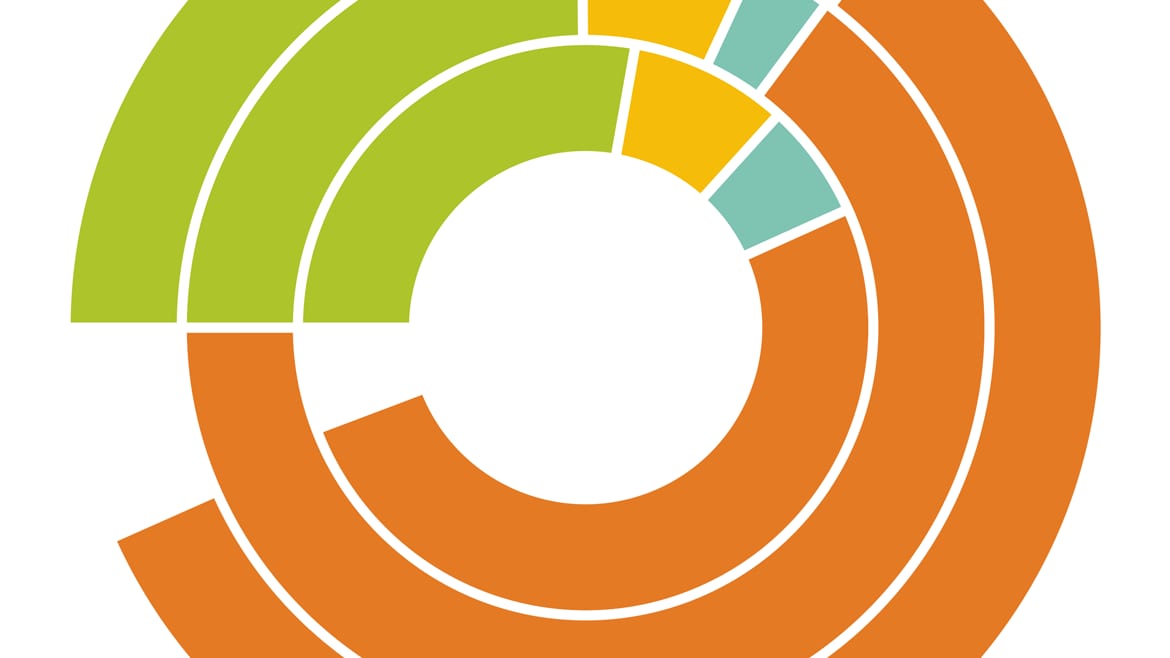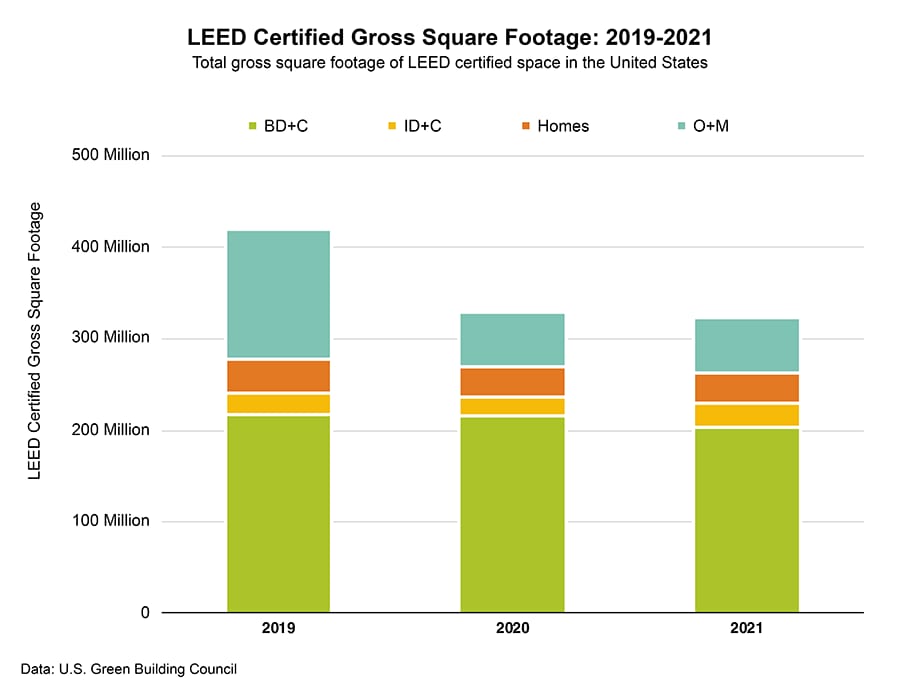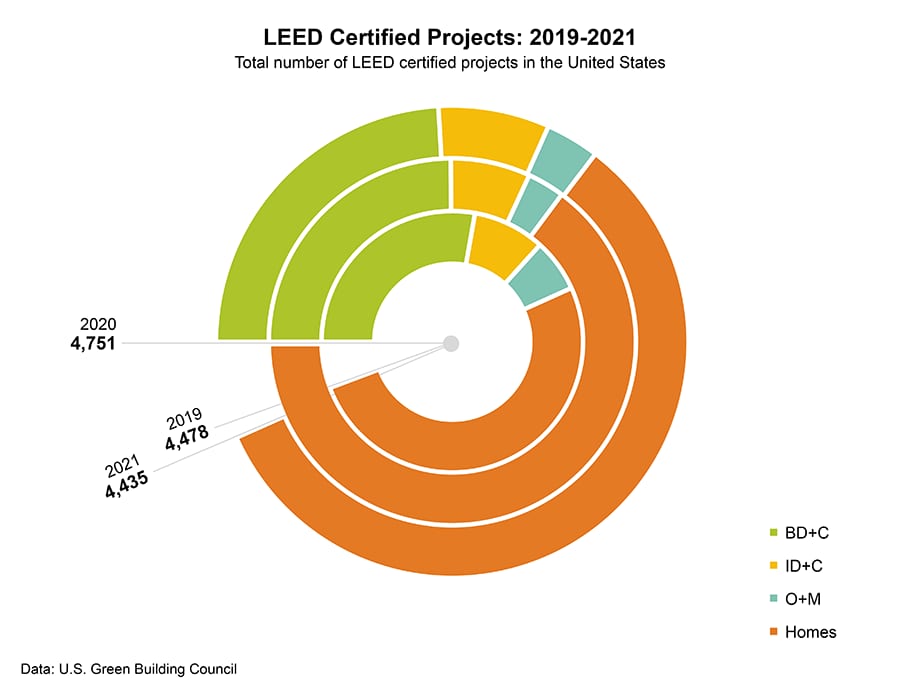The number of LEED certified projects have remained stable through the pandemic
The total number of LEED certified projects in the United States fluctuates from year-to-year. The number of LEED certified projects rose prior to and throughout the Great Recession, reaching an all-time high just over 6,800 in 2013. but have not been below 4,000 since 2009.
Through the pandemic, the total number of LEED projects actually increased; however, 2021 totals were nearly identical to 2019. Despite lockdown measures and economic tumult, the total number of LEED certified projects in the U.S. do not appear to have been impacted significantly by the pandemic.
Residential projections are trending upward
The spread of LEED of building structures certified under BD+C, ID+C, O+M, and Homes have remained consistent as well. Interestingly, LEED for Homes projects increased throughout the pandemic and if this trend continues, it may be indicative of a post-pandemic market shift in homebuilding—possibly driven by incentives for multifamily projects.


